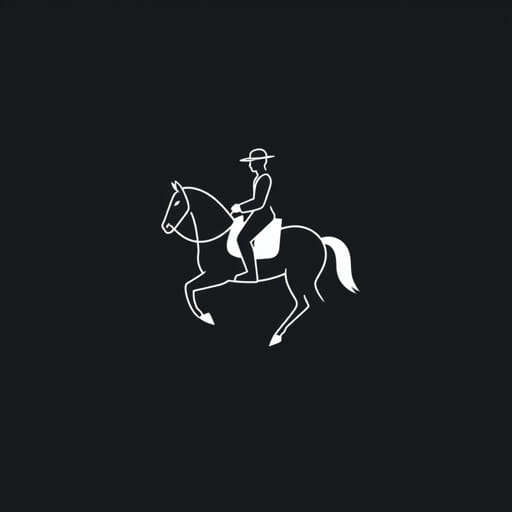Type Of Cavalryman 7 Letters
Throughout history, cavalrymen have played crucial roles in battles and military campaigns. These mounted warriors were not only symbols of power and mobility, but they also represented specialized roles depending on the era, region, and tactical needs of their armies. When tackling the crossword clue Type of cavalryman (7 letters), the answer that often fits contextually and structurally is dragoon. This seven-letter word is rich in history, meaning, and application, making it an ideal focus for deeper exploration. Understanding what a dragoon was, how they evolved, and why they remain significant in military and cultural references will shed light on this fascinating class of soldier.
Understanding the Term Dragoon
The word dragoon refers to a type of soldier who was trained to fight both on horseback and on foot. Originally, dragoons were mounted infantry troops who would ride horses into battle but dismount to fight. Over time, their role evolved, and they became more associated with light or medium cavalry, often used for skirmishing, reconnaissance, or swift attacks.
Origins of the Word
The term is believed to have originated in 16th-century France, where dragon referred to a type of firearm carried by early dragoons. The flame and smoke of the weapon were said to resemble a dragon’s breath, hence the name. Eventually, the word dragoon came to signify the soldier rather than the weapon.
Role and Function of Dragoons in Military History
Dragoons were valued for their versatility. Unlike traditional cavalry, which engaged in direct combat on horseback, or infantry, which marched into battle on foot, dragoons could adapt based on terrain, enemy strategy, or tactical demands. This made them incredibly valuable in a range of military scenarios.
Key Duties of Dragoons
- Serving as mobile infantry, able to move quickly across terrain
- Scouting and gathering intelligence
- Flanking enemy positions in skirmishes
- Providing rapid reinforcements where needed
- Guarding supply lines and communication routes
Because of these roles, dragoons were often deployed in areas where adaptability and speed were essential. Their mixed fighting capability made them ideal for 17th through 19th-century warfare, particularly in Europe and colonial territories.
Dragoons Across Nations
Various nations incorporated dragoons into their armies, each putting their unique spin on the concept. Although the core concept remained consistent, uniforms, tactics, and battlefield usage often varied depending on the country.
French Dragoons
In France, dragoons were first formed under King Louis XIII in the early 1600s. Initially serving as mounted infantry, they soon became light cavalry. French dragoons were used extensively during the Napoleonic Wars, playing roles in both offensive charges and strategic dismount operations.
British Dragoons
The British Army maintained several dragoon regiments, some of which still exist in ceremonial roles today. Over time, distinctions arose such as Dragoon Guards and Light Dragoons, reflecting their roles as heavy or light cavalry. They saw action in the War of Spanish Succession, the Napoleonic Wars, and the Crimean War.
American Dragoons
During the American Revolutionary War and the early years of the United States, dragoon units served as a vital part of military operations. The 1st and 2nd Dragoons were key units during the War of 1812 and the Mexican-American War. The U.S. eventually transitioned its dragoon regiments into cavalry divisions by the late 19th century.
Uniforms and Equipment
Dragoons typically wore distinctive uniforms that made them stand out on the battlefield. Their outfits combined the practicality of infantry attire with the flair of cavalry gear, reflecting their dual role. Uniform styles evolved over the centuries, but several common elements remained.
Typical Dragoon Uniform Features
- Tricorn or crested helmets
- Long boots suitable for horseback riding
- Sabers and carbines or muskets
- Breastplates or light armor in earlier centuries
- Bright regimental colors to signify national or unit identity
Their equipment also reflected their flexible combat style swords for close combat and firearms for skirmishing at a distance. Saddlebags and utility belts allowed them to carry more gear than traditional infantry.
Decline and Transformation
With the advent of modern warfare and the introduction of mechanized units in the 20th century, traditional cavalry including dragoons saw their roles diminished. Horses were no longer effective in the face of machine guns, armored vehicles, and aircraft. However, the legacy of dragoons lived on.
Modern Roles and Legacy
- Many dragoon regiments transitioned to armored or mechanized infantry
- Some units retained the dragoon name as a nod to historical tradition
- Today, dragoons are often featured in military reenactments and parades
- Popular culture, such as novels, films, and games, continues to highlight their historical role
For example, some armies use the term dragoons for armored reconnaissance units, reflecting their original purpose of mobility and intelligence gathering.
Dragoon in Popular Culture and Crossword Clues
The term dragoon appears frequently in literature, war history, and pop culture. Its presence in crosswords is no surprise. For a clue like Type of cavalryman (7 letters), the answer not only fits the character count but also carries historical accuracy and familiarity with many solvers.
Common Crossword Contexts
- Clues referencing 18th or 19th-century military roles
- Terms associated with horseback warriors
- Military units with hybrid combat roles
Because of its unique letter count and historical roots, dragoon is an excellent crossword answer for anyone familiar with military history or classic terminology.
When exploring the crossword clue Type of cavalryman (7 letters), the word dragoon stands out as the most fitting and historically rich solution. More than just a puzzle answer, a dragoon represents a unique blend of mounted mobility and battlefield versatility. From 17th-century European campaigns to modern military ceremonies, dragoons have left an indelible mark on history. Understanding their role provides insight not only into military tactics but also into how language preserves the memory of those who served in these adaptable and courageous units.
